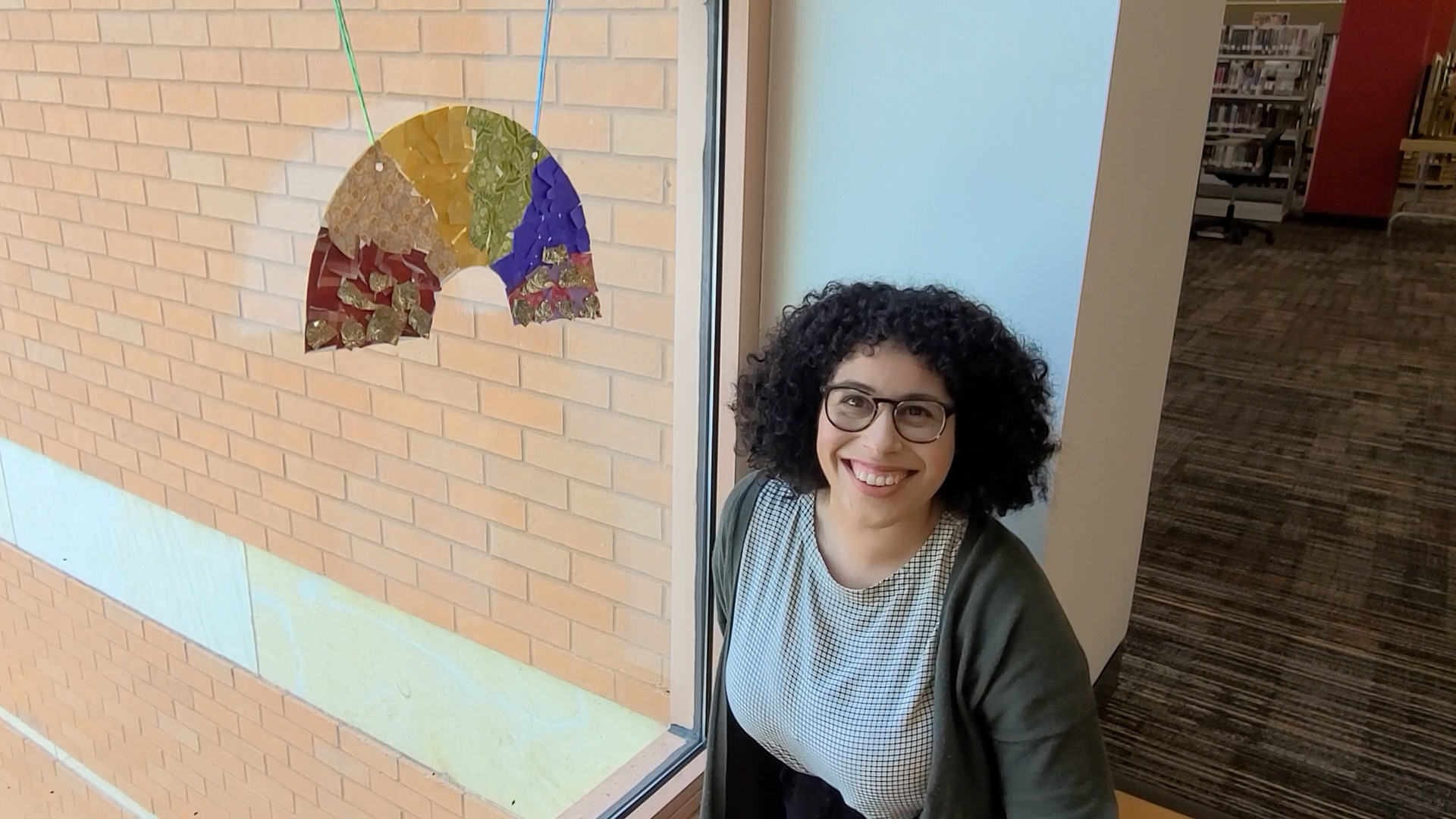
Play & Learn: Rainbow Collage
Bring spring to your window by creating your own rainbow! Use your creativity to design a rainbow using supplies around your house.
Playing is one of the Every Child Ready to Read program’s five early literacy practices that build valuable skills. Play-based activities help encourage your child to explore their world. Art is one way to add play into your day, and engaging in creative projects helps your child build brain connections by engaging multiple senses like sight and touch.
Colors are part of our daily lives. Adding colors to playful and everyday life experiences is a great way to expose your child to new concepts and encourage learning. Repetition is a key part of learning.
Art projects encourage your child’s confidence and critical thinking skills. By asking your child what materials to create with, you are encouraging their self expression and problem solving skills, too! Tearing, arranging and gluing help build hand-eye coordination and fine motor skills, which we use for reading and writing. Identifying colors is also an important cognitive skill, one of the ways we interpret the visual clues and words that make up our world. Sorting and classifying colors helps your child develop visual literacy, the ability to differentiate between different things. Knowing how things are alike and different is an important first step to recognizing the differences in letters. Exploring colors also builds your child’s vocabulary and conversational skills by giving more words to describe their world.
Creating are and exploring together are great ways to build your connection with your child. After all, you are your child’s first and most important teacher. The person they learn most from is you!
You can create a collage with all kinds of materials. Try using:
- Construction paper
- Wrapping paper
- Scrapbook paper
- Cotton balls or craft poms
- Tissue paper
- Aluminum foil
- Buttons, feathers, sequins, or other decorative items
As you work, you can explore colors, textures, and even counting.
You can also incorporate colors into your regular reading time. Here are a few books and resources that introduce the colors in our world. Point out the colors you see on the page. Where in your home do you see the same colors? What about when you’re exploring outside? Explore, experiment and most of all, have fun!
Extended Reading

For more early learning activities, check out our Early Literacy in Action page.



